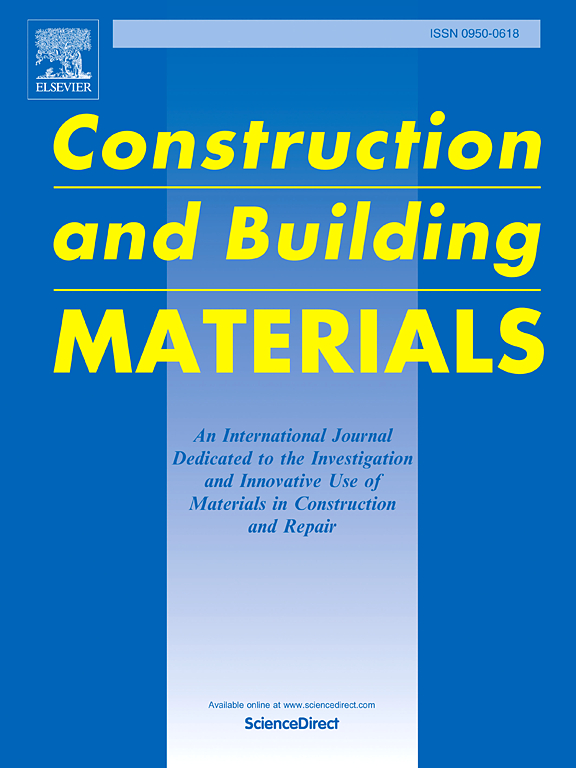Evaluation of the cooling mechanisms and performance of passive radiative cooling coatings in track-slab applications
IF 7.4
1区 工程技术
Q1 CONSTRUCTION & BUILDING TECHNOLOGY
引用次数: 0
Abstract
The thermal management of ballastless track slabs is crucial to ensure the long-term durability of high-speed rail systems. However, current techniques fall short of achieving sufficient cooling of track slabs in a simple and efficient approach. In response to this challenge, we investigated the potential application of three commercially available passive radiative cooling (PRC) coatings for the surface cooling of track slabs in this study. The experimental analysis revealed that these PRC coatings demonstrated high solar reflectivity and strong emissivity in the far-infrared spectrum, achieving a significant temperature reduction of 21.5–25.7°C on stainless steel plates compared to uncoated plates. The primary mechanism driving this cooling effect is attributed to the reflection of solar radiation, contributing 706–857 W/m², or 77 %-93 % of the total cooling power density. Self-external radiation contributed limitedly, revealing a large potential for improvement. The optical properties are supposed to be positively correlated with the mesoscopic smoothness of the coating surfaces. Notably, the cooling performances of the same PRC coatings were approximately consistent across different thicknesses, suggesting that material properties rather than thickness are the dominant factors in cooling efficiency. Further application on C55 concrete specimens commonly used for ballastless track slabs validated the effectiveness of PRC coatings, reducing surface temperatures of specimens by an average of 16.2°C and decreasing the internal temperature gradient by 47°C/m. These findings underscore the superior cooling capacity of PRC coatings compared to other heat-dissipation techniques reported in the literature. This study provides a scientific foundation for developing sustainable thermal management strategies in high-speed rail infrastructure and offers insights into the broader application of PRC technology in civil engineering.
求助全文
约1分钟内获得全文
求助全文
来源期刊

Construction and Building Materials
工程技术-材料科学:综合
CiteScore
13.80
自引率
21.60%
发文量
3632
审稿时长
82 days
期刊介绍:
Construction and Building Materials offers an international platform for sharing innovative and original research and development in the realm of construction and building materials, along with their practical applications in new projects and repair practices. The journal publishes a diverse array of pioneering research and application papers, detailing laboratory investigations and, to a limited extent, numerical analyses or reports on full-scale projects. Multi-part papers are discouraged.
Additionally, Construction and Building Materials features comprehensive case studies and insightful review articles that contribute to new insights in the field. Our focus is on papers related to construction materials, excluding those on structural engineering, geotechnics, and unbound highway layers. Covered materials and technologies encompass cement, concrete reinforcement, bricks and mortars, additives, corrosion technology, ceramics, timber, steel, polymers, glass fibers, recycled materials, bamboo, rammed earth, non-conventional building materials, bituminous materials, and applications in railway materials.
 求助内容:
求助内容: 应助结果提醒方式:
应助结果提醒方式:


